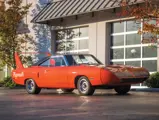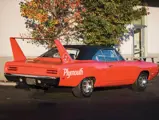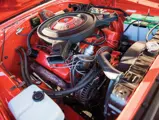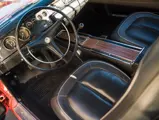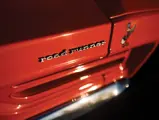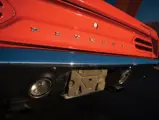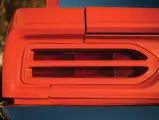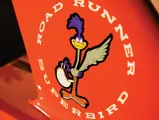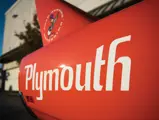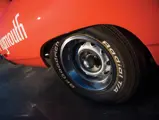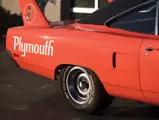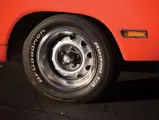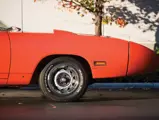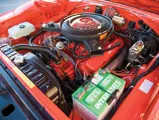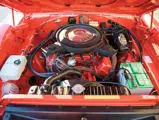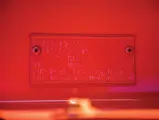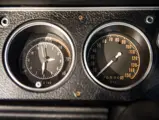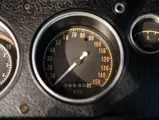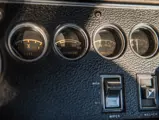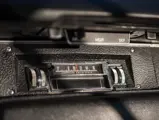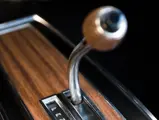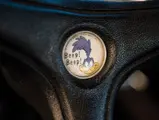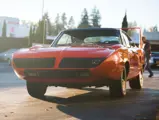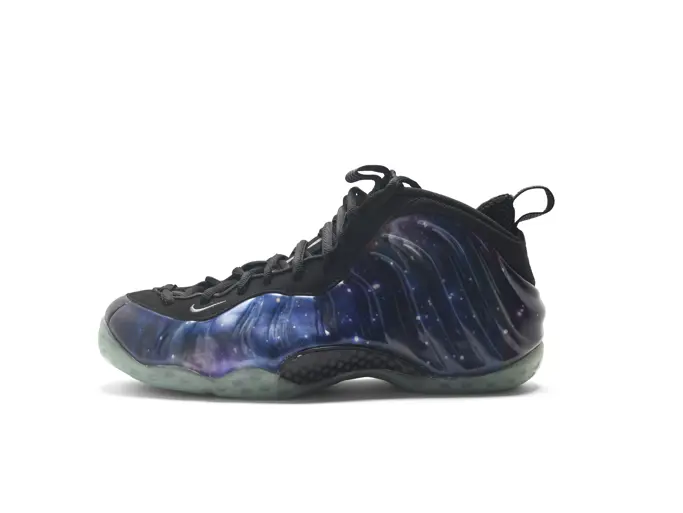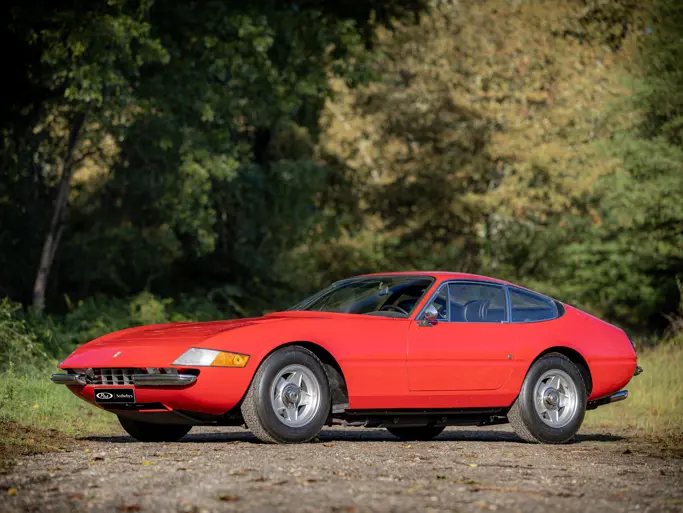Arizona 2017
1970 Plymouth Road Runner Superbird
Offered from a Private Collection
{{lr.item.text}}
$110,000 USD | Sold
 | Phoenix, Arizona
| Phoenix, Arizona
{{internetCurrentBid}}
{{internetTimeLeft}}

- Offered from a private collection
- A genuine, matching-numbers 440/375 Superbird
- Iconic Hemi Orange livery; very authentic with original interior
- A NASCAR warrior for the street
Model RM. 375 bhp, 440 cu. in. OHV V-8 engine, three-speed TorqueFlite automatic transmission, torsion bar independent front suspension, live rear axle with semi-elliptical leaf springs, and disc-front, drum rear power hydraulic brakes. Wheelbase: 116 in.
Conceived for NASCAR racing, the Superbird was a follow-up project from Dodge’s Charger Daytona of 1969, one of the so-called “aero cars” competing that year. Taking advantage of the Daytona experience, engineers worked from the Road Runner, itself a no-nonsense performance version of the Satellite. Further refining the nose cone and wing from the Charger Daytona, they were able to achieve greater efficiency. Three engine options were available: a 426 Hemi, a 440 Super Commando with a single four-barrel, and a 440 Super Commando Six Barrel with three carburetors.
NASCAR had raised the production requirement for homologation, requiring not 500, but one for every two dealers in the United States. For Plymouth that meant 1,920 cars, and best estimates put the total production at 1,935 cars, all built in 1970.
The specific objective of the Superbird was to lure Richard Petty back to Plymouth. Petty had left for Ford in the fall of 1968, but he succumbed to the Superbird’s charms in 1970, winning eight races and finishing well in many more. For 1971, however, NASCAR limited the engine size of the aero cars to five liters, or 305 cubic inches. Larger engines were penalized by carrying more weight, which quickly deflated the whole aero effort. The cars quickly became orphans, and even the street versions were difficult to sell because of the extreme styling. Some were even converted back to Road Runners to make them more saleable. In recent years, however, soaring prices for original Superbirds has begotten a cottage industry in conversion kits for Road Runners and Satellites.
Formerly in the prestigious collection of John Staluppi in Florida, this genuine 440 Super Commando Superbird has been verified with matching numbers. During a recent restoration, numbers on the engine, transmission, core support, trunk rail, title, and original fender tag were verified. The drivetrain is original to the car, including alternator, starter, and distributor. Every mechanical element was rebuilt, including the steering box. The rear quarters and trunk floor were replaced during the restoration, but all other sheet metal is original. The nose cone and wing are the originals from the car; they are not reproductions. The front seats have been repaired, but otherwise the interior is original.
The car is equipped with power steering, power brakes, windshield washers, and an AM radio with working eight-track player. It is painted in Hemi Orange, with black vinyl interior and carpet, all in exceptional condition. The body work and paint are excellent, and the engine compartment is correctly detailed. A rare example of a rare car with exceptional provenance, it signals its arrival aptly.
“Beep, Beep!”

